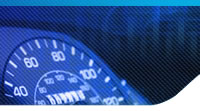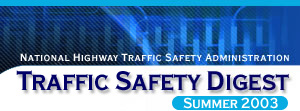 |
 |
 |
|
OREGON PROBLEM IDENTIFICATIONThe
Think First Program of Oregon Health & Science University (Department
of Neurology) aims to reduce traffic-related brain and spinal cord
injuries and fatalities in Oregon by providing age-appropriate education
to youth in Kindergarten through the Twelfth Grade. However, there is a
need for traffic safety programs targeting children (ages five through
eleven) that provide parents and guardians the tools to reinforce proper
behavior at home. Think First developed the first tool, Family Adventures in Safe Transportation (FAST), to address the information gap between children and parents. The FAST tool is a fun and educational way to build a family relationship around traffic safety. GOALS AND OBJECTIVESThe primary goals of the Think First FAST project were to:
STRATEGIES AND ACTIVITIESThe Program Coordinator of FAST assembled a focus group of
traffic safety and education professionals to help develop the workbook.
Three different workbooks were produced; (1) targeting youth in
Kindergarten through First Grade, (2) targeting Second and Third Graders,
and (3) targeting Fourth and Fifth Graders. Each workbook has three
lessons about pedestrian safety, bicycle safety, and occupant protection.
An evaluation tool was also developed, with pre- and post-tests for each
of the three age groups and their parents. A successful pilot session took place at an elementary school
with a total of 50 participants (15 adults, 35 children). All the children
who participated received a FAST workbook to use with their
parents/guardians throughout the session. Families were divided into three
groups rotating between pedestrian safety, bicycle safety, and occupant
protection. Three translators also attended the session making it possible
for Spanish-speaking families to participate. All participants received
bicycle helmets and, when needed, booster seats were provided by the
program at no cost. Booster seats will continue to be provided at no cost
as long as adequate funding exists. In addition, contacts at state or
county agencies will be provided for families who need reduced-cost or
free seats. RESULTSThe three colorful, age-appropriate workbooks created for this project were a major accomplishment. The format of the workbook and session worked well for each targeted age group. Pre- and post-tests were used to gauge knowledge and behavior changes in response to working with the FAST tool. These tests showed an increase in knowledge and changes in behavior among youth (52 percent) and adults (71 percent) who worked with the FAST tool. In addition, the entire workbook is now available online on Think First Oregonís Web site, www.ohsu.edu/hosp-thinkfirst. |
|||||||||||||||||
|
|
||||||||||||||||||
 |
 |
 |